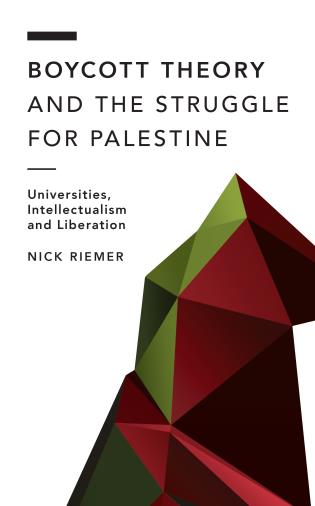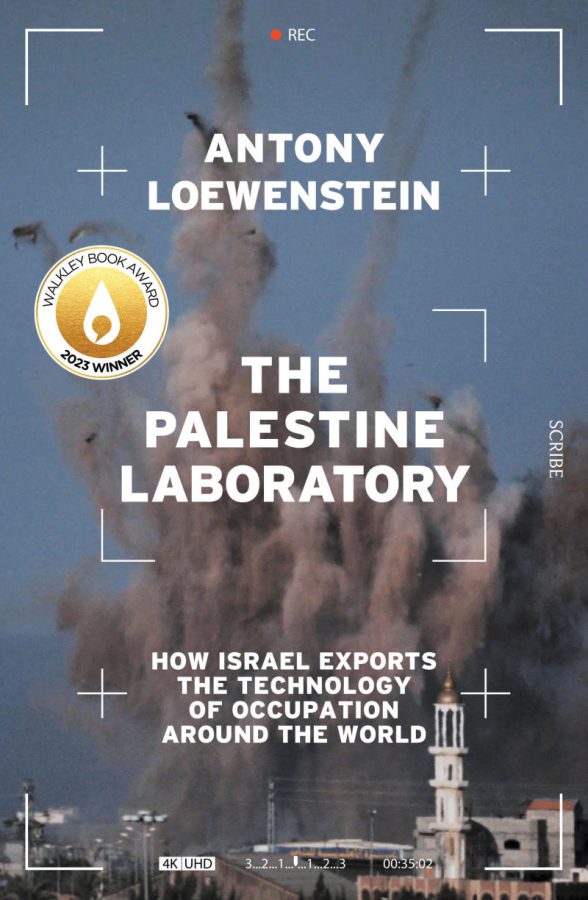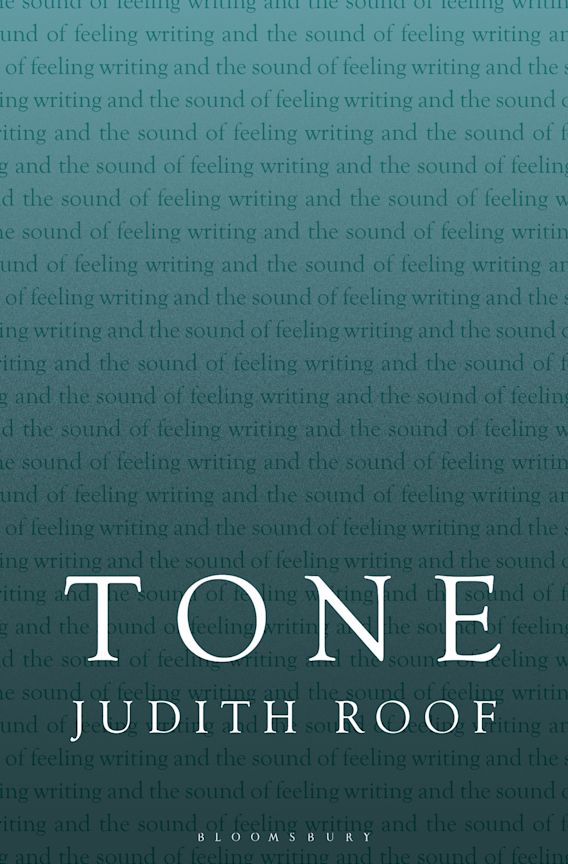A few weeks after I submitted my doctorate in 2015, my father, a Palestinian man four months older than the state that displaced him, and I flew to visit family in America. It was only the second time since 1952 – when his parents, and their six children, boarded an Italian ocean liner, the Roma, for Australia – that Dad had been presented with the opportunity to visit relatives long divided from us. The exigencies of visa applications had split this tight-knit but expansive family far and wide: one of my Pa’s brothers, his sister, as well as my grandmother’s father, five sisters, and three brothers, along with tens of first cousins, ultimately obtained passage to America. Brutally separated from each other and from where they began, each member of this family was obliged to salvage a life out of the wreckage of the 1948 Palestinian Nakba. It is just one instance of the massive disruption to Palestinian social, cultural, and political life occasioned by that event, which translates to ‘catastrophe’ in English.
I was to continue to Denver, to present at the American Anthropological Association’s (AAA) 114th Annual Meeting. We parted ways in Arizona, at the house of Dad’s spirited ninety-three-year-old Aunt Najla, who had portraits of my grandmother Ellen displayed on the dressing table in her bedroom. Najla confessed to me that it was as if Ellen, who had died in Australia eleven years earlier, was still with her. The sisters had seen each other just once after my family’s final departure from a home my Pa built, but never sold, in Jerusalem (now occupied by wealthy Jewish Israelis who have benefitted – in ways that are both easily calculable and harder to quantify – from that theft). Najla and Ellen met in 1968, shortly after my Pa suffered a heart attack. Where a lesser man might have called the trip from Melbourne to Los Angeles off, this misfortune impressed upon Pa the importance of reuniting, if only briefly, with family he longed to see. Despite my grandmother’s entreaties to consider his health, he insisted on forging ahead.
Since, I suppose, the finality of moving to Australia was close to indistinguishable from that of death for Najla, she preferred to imagine Ellen in a place she never saw, but could fantasise about visiting. This is how Palestinians have learnt to sustain relations with the people they treasure – people who populate their imaginations but are absent from their present lives – after the violent hijacking of their country. The Nakba, as endorsed by the Western consensus, tore through the fabric of a vibrant Palestinian society in historic Palestine, and continues to disrupt the lives of all Palestinian people.
The 114th meeting of the AAA was well subscribed, with over six thousand of the organisation’s approximately eleven-thousand members (at that time) registered for the six-day event. As Saskia Walther later observed in her conference review ‘Familiar/Strange’, a prominent topic at the meeting was ‘the agency of indigenous people’, alongside ‘scrutinizing and deconstructing familiar concepts’ including ‘“western” epistemologies’. My own memories of the conference are of attending a significant number of panels comprised of prominent Palestinian and Anti-Zionist Jewish scholars, sessions coloured by the looming AAA Business Meeting, where two competing resolutions on the academic boycott of Israeli institutions were to be considered. The precise number of attendees at that Business Meeting, which ran for three hours and fifteen minutes, was not recorded. 250 were needed for quorum; 1,500 voting cards were distributed.
The first resolution, which opposed boycott, was defeated: 196 to 1,173. The second, entitled ‘Resolution to Boycott Israeli Academic Institutions’ saw a considerable number of attendees queue to have their say prior to the commencement of voting. Objections to the second resolution included allegations that supporting boycott is a call for the destruction of Israel (a line that Israel and its allies have consistently taken on the 2005 Boycott Divestment and Sanction statement); another was that Israeli universities are, like Israeli society, ‘split’ on controversial political issues and that a vote for boycott would strengthen the Israeli political right – a point that had been put forward by seven anthropologists, four of whom worked in Israeli universities at the time, in an article published in Haaretz two days before the vote. Using a slippery slope argument, they suggested that boycott might push a ‘radicalized, desperate Israeli government possessing a nuclear arsenal’ towards doing who knows what. These emotive arguments substantially relied on the idea that the situation is too complex for outsiders to understand, and that it would therefore be catastrophic for them to intervene. In warning against boycott, however, they also dictated, paradoxically and problematically, what Palestinian allyship should look like. Eight years later, it is now better understood that the nature and performance of allyship should be determined by – and judged against – the calls of the oppressed community one claims to support (allyship is not something non-Palestinians can award to themselves, however well-meaning or sympathetic). Such objections to boycott are much more concerned with the anxiety of Israelis, existential or otherwise, than with the actual conditions of repression and injustice in which Palestinians live.
It was striking that the speakers who exhibited distress were uniformly in opposition to the resolution. In contrast, those in favour calmly questioned how the cost of embarrassment and inconvenience to Israeli colleagues could credibly be weighed against the extremely prejudicial reality of Palestinian colleagues. Resolution two was overwhelmingly passed: 1,040 to 136. Glancing around the ballroom where the meeting was held, one saw a sea of green and white badges clipped onto lapels and winter clothes that read ‘vote 2 boycott’, indicating that a last-ditch debate that pitched feelings against rights would not sway the resolve of the more than a thousand members who chose to heed the 2005 call from Palestinian civil society to boycott the Israeli academy. Therefore, it was something of a shock that when the resolution passed at the Annual Business Meeting was put to the full membership for adoption in the Spring of 2016, it was narrowly defeated (by fewer than forty votes) in a ballot with a participation rate of 51%.
Only in June 2023 did the AAA adopt a resolution, endorsed by 71% of voters, to boycott Israeli academic institutions. Cited in the 2023 AAA resolution were Israel’s 2018 Nation State Law that enshrined the principle of Jewish supremacy as well as the 2021 adoption of the term ‘apartheid’ to describe Israel’s regime of territorial control by Israeli Human Rights organisation B’Tselem. It appeared that unlike the heated contest at the 2015 meeting, the case against boycott was now beneath serious consideration because the character of the Israeli state, in reference to legal definitions of racial supremacy and apartheid, was, at least to this academic peak body, beyond debate. Yet the AAA felt compelled to note in its announcement of the resolution vote that the issue remained ‘contentious’.
The history of the AAA resolution is mirrored in the experience of other academic associations. Take the American Studies Association (ASA), a relatively early adopter of a comprehensive boycott resolution in 2013. As a result of the ASA’s endorsement of boycott, it was, along with targeted individuals, mired in legal challenges for nine years. Despite the ultimate victory of the ASA and individual defendants named in that lawsuit, the financial and human costs on all the defendants was enormous – which was precisely the point of litigation.* The fate of the ASA resolution was a cautionary tale to other associations considering similar actions.
The opening chapter of Nick Riemer’s Boycott Theory and the Struggle for Palestine: Universities, Intellectualism and Liberation returned me to the AAA’s 2015 meeting, which occurred shortly after the Israeli Defence Force’s 2014 Operation Protective Edge, the most lethal assault on Gaza up to that point. It had seemed then that if meaningful diplomatic change was not imminent, it was at least central to the business of universities to foreground the asymmetrical dynamic of such assaults, to take action in their immediate contexts against institutional complicity, and to pressure Israeli counterparts towards meaningful change. Riemer’s book is a compelling and meticulously documented account that presents the underlying and contrastive stakes of the ‘debates’ that exist around the case for academic boycott – namely, the life-threatening circumstances in which Palestinian students and scholars undertake their work on the one hand; and the disturbing instrumentality of Israeli universities in perpetuating that reality on the other. The starkness and specificity of Riemer’s approach calls to mind lines from Anne Boyer’s recent resignation letter from the New York Times: ‘No more ghoulish euphemisms. No more verbally sanitized hellscapes’. ‘Euphemism’ and ‘verbal sanitisation’ prop up the seemingly polite arena of ‘debate’, the unexamined good of which Riemer so lucidly dismantles.
Riemer does not simply extol the worth of schooling as the last possession of the colonised (as it is for diasporic Palestinians quite literally stripped of everything else they owned up to 1948). He argues convincingly that Israeli apartheid ‘constitutes an attack on the very possibility of school and university study for Palestinians’ (his emphasis) and that ‘for anyone committed to the universal importance of education, this scholasticide should be intolerable’.
Palestinian students face a litany of obstacles. In Gaza, after Operation Protective Edge, ‘sixty-six per cent of students at Al-Azhar University – almost four thousand people – lost their homes’. In the West Bank, due to Israel’s oppressive system of check-points, journeys that should take twenty-five minutes involve four- or five-hour travel delays. This ‘theft of time and dignity’ has been widely detailed, including by Emily Jacir in her 2002 work Crossing Surda (a record of going to and from work). Though these disruptions are nothing new, they should be no more acceptable for their predictability. But these are the everyday impacts of occupation, the very background against which Palestinian intellectuals are directly targeted and encounter gross obstructions to their research and teaching. Faculties are left unstaffed as arrests are routine and imprisonment commonplace, with Palestinian academics and students languishing in indefinite administrative detention, often without charge. According to Riemer, the IDF ‘and other security forces regularly make armed incursions onto campuses, which they treat as their hunting grounds; live ammunition is regularly fired’. Palestinian scholars have played a significant role in international diplomacy: the Palestinian negotiating team at the 1991 Madrid Conference were drawn from among the staff of Birzeit University. In this context, the intentions behind the IDF’s campus incursions are not hard to discern.
While boycott does not target individuals acting without institutional support or authority, it does assume the burden of withdrawing the privileges of scholars and students (such as exchange programs) engaged in the official activities of Israeli tertiary institutions that normalise occupation and apartheid. While the imposition may seem harsh, Riemer highlights that Israeli universities are not passive bystanders or even merely complicit in Palestinian oppression. Rather, they are a central apparatus of both anti-Palestinianism and the pursuit of the Zionist state project in its ideological and spatial manifestations, given their ‘close structural symbiosis with the Israeli army and security apparatus’. Moreover, Riemer dispels the sector’s argument on the basis of the supposed political inefficacy of universities, contrasting their uniform rejection of boycott with their effective criticism and resistance to government inaction on domestic violence and government policy on ‘the requirement for gender-segregated programs for ultra-Orthodox students’.
While opponents of boycott argue that universities must safeguard the ‘free flow of ideas within the international scholarly community’, Riemer demonstrates, through theoretical exposition and practical illustration, that the assumptions made in liberal university spaces about dialogue are not self-evident, but should be fought for. There is nothing unusual about boycotts in academic life, rather they are constitutive of it. As Steven Salaita argues in Inter/Nationalism: Decolonising Native America and Palestine, boycott counts as part of a ‘dialogue’ – ‘one in which the Palestinian people are finally able to participate’.
At issue, then, is the subject and not the strategy: criticism of Israel is controversial. One complaint I vividly remember about Raimond Gaita’s 2009 public seminar series, ‘Gaza: Morality, Law and Politics’, which responded to the moral crisis of Operation Cast Lead (a twenty-two-day aerial assault on Gaza that began on December 27, 2008), was the objection to singling out Israel for special attention (so much so that Gaita subsequently addressed it in his introduction to the published version of the seminars). Against the deflection of the questions ‘Why Israel? Why us?’, Riemer makes a number of compelling arguments. Of special relevance to those committed to the project of liberal values is the concern that academic boycott ‘targets’ Israel. This argument insists on upholding Israel’s academic freedom – or the right not to be boycotted. Riemer responds by drawing on the extensive literature of both Palestinian and Jewish authors, who have documented the way in which Israel asks to be judged, namely by the standards of liberal democracies, while simultaneously benefiting as a ‘state of exception’ in international law. It is only Palestinians, as Riemer demonstrates, who ‘are required to justify their right to existence and solidarity’ (quoting Ben White). A more salient question Riemer invites us to consider is: how are those who oppose boycott working to secure academic freedom for others? Boycott, it should be remembered, is a tactic not a principle, and adherence to it is a tangible act of solidarity that Palestinians have requested.
What are universities for? What are their organising logics? For Riemer, universities perpetuate a fantasy of the absence of politics from their rightful business. Yet if we consider the material conditions of the twenty-first-century university, as Riemer does, it is difficult to avoid his conclusion that ‘this aristocratic self-image takes no small measure of wilful blindness to maintain’. In an argument made by Magid Shihade that Riemer amplifies, attention should be turned instead to the existing if tacit boycott through the silencing ‘of Palestinians in Palestine and elsewhere and [of] Pro-Palestine voices’ that makes academic boycott a counter-boycott. One need only look to the recent decision of Columbia University to suspend pro-Palestine student groups to verify this claim.
Shihade is right. The anti-boycott camp’s defence of free speech pays little attention to how Palestinian and pro-Palestinian academics are routinely policed in academic life. I’ve sat on a panel for the launch of an edited book where the moderator invited other scholars to discuss their research, but when it came to me asked why my work appeared in the publication at all. As a scholar of Palestine Studies with a particular interest in the circulation and appropriation of narrative, I have received referee reports by expert scholars who have side-stepped my arguments altogether to insist, for instance, on the good deeds of Jews in the world. I should say that I have never authored a paper on this topic, or its opposite. One referee report I’ve never quite put behind me queried my use of the word ‘slaughter’ to describe the 214 Palestinian protestors killed by Israel in the 2018-2019 Great March of Return. The otherwise constructive reviewer asked, ‘What does the author mean by use of the word slaughter in the opening paragraph?’ Yet words like ‘slaughter’ and ‘massacre’ are routinely used to describe the victims of shooting-sprees in the United States, the requisite number of victims appearing to be no less than five. I said as much in my rebuttal. No doubt there are many stories of this nature.
In the latter half of the book, Riemer analyses an issue fundamental to these preceding arguments, that is the function and place of communication in the university. Speech, according to this investigation, can be understood as a part, though by no means the only component, of how we understand communication as a whole. Riemer historicises ‘speech’ as a concept embedded in an ‘ethnocentric understanding of language that developed in European modernity’. In this expanded field of inquiry, and with Riemer’s expertise in the history and philosophy of linguistics, he urges the interrogation of the power dynamics that surround speech acts in academic settings and the legitimacy of disruption as an act firmly within, rather than beyond the pale, of communicative exchange.
Just as Edward W. Said famously argued in Orientalism regarding the systemic but invisible assumptions that infiltrate knowledge production, Riemer insists that speech ‘is not politically innocent’, cautioning his reader not to mistake language ‘as the instrument of reason and objectivity’. A vast body of research across various scholarly disciplines is rehearsed to support the claim that, for instance, emotions are integral to language. If we are to accept this premise, then we must also accept that outlawing certain forms of communication, particularly those available to the de-platformed and institutionally marginalised, is to ‘contribute to maintaining practices of serious injustice’. Riemer continues:
once this is acknowledged, disruption ceases to be an unjustifiable violence against a neutral order of communicated ideas, understood as inherently innocent of action. Instead, it becomes an intervention into a field where speech and the most damaging kinds of material practices are intimately bound together.
In examining speech within a broader context of ‘material practices’, Riemer advocates for both relationality and responsibility: ‘both speaker and disrupters are accountable to each other and to the rest of the audience for their interventions, and never immune from the need for justification’. In this light, silence as a mode of assent and disruption as a mode of refusal are given a weight seldom acknowledged in justifications of one of liberalism’s most consecrated values. As Riemer clarifies, ‘the audience’s silence is something that should be considered as discretionary. When a talk is open to the public, there is no pre-existing contract that mandates non-interruption’.
The other side of this argument is an examination of dialogue, which Riemer shows is ‘not necessarily socially beneficial’ and does not always ‘intrinsically advance public enlightenment’. For Riemer, one of the fundamental misapprehensions in the German debates over the republication of a critical annotated edition of Mein Kampf was the assumption that fighting neo-Nazism ‘was not principally a political task … but a cultural or intellectual one’, consisting in merely ‘identifying and debunking Hitler’s lies’. A misguided sense of ‘intellectual responsibility’ can thus end up legitimising the very thing it’s trying to combat. In a similar vein:
Palestinian supporters often argue that there are cases where even debating the ethics of Israel’s policies … can be politically counterproductive, since doing so concedes the possibility that fundamental and obvious violations of Palestinian rights might be justifiable.
This being the case, Riemer rejects an ‘inherent objection to the boycott on the grounds that intellectual work in universities necessarily contributes to progress and therefore should never be obstructed’.
As a work of allyship and amplification, Boycott Theory and the Struggle for Palestine models much of its own argument in favour of academic boycott. Clearly structured and systematically reasoned, Riemer’s book, I am convinced, will be a valuable source for the newly curious alongside seasoned allies in better understanding the repression of speech and action – on and off university campuses – that denounce the systematisation of violence against Palestinian life, inside and outside of historic Palestine. This work is particularly timely given the troubling consequences of the International Holocaust Remembrance Alliance (IHRA) definition of antisemitism which some Australian universities have recently adopted.
Those aware of the recent visit to Australia of Francesca Albanese, United Nations ‘Special Rapporteur on the situation of human rights in the Palestinian territories occupied since 1967’ (such is the bureaucratic title of the role), will remember a clip that went viral after Guardian journalist Daniel Hurst queried Albanese’s use of the word ‘domination’ at the National Press Club. Revising his remark in response to Albanese’s facial expression, Hurst described domination as an unhelpful ‘trope’. Albanese replied: ‘This is not a trope. This is international law’. It was a shot in the arm of common sense for anyone who has reported on Palestine for the length of time Anthony Loewenstein has, under undoubtedly hostile conditions. Indeed, the overarching premise of his Walkley Award-winning book, The Palestine Laboratory: How Israel Exports the Technology of Occupation Around the World, is to point to Israel’s historic and current manipulation of international politics and public perception through both governmental and extra-governmental channels. What this demonstrates is a shift in form, but never intention, of Israeli domination since at least the 1950s, when substantial reparations ‘given to Israel from West Germany in 1952 provided the investment resources the [arms] sector needed’.
Loewenstein has previously raised the differential application of boycott across ostensibly analogous contexts, comparing the cases of Russia and Israel (he points out the alignment between these states in a range of questionable circumstances). Said’s question of who has the ‘permission to narrate’, and under what circumstances, remains all too relevant. Take, for instance, the plea of a Ukrainian writer, who in announcing her withdrawal from the 2023 Adelaide Writers Week stated, ‘With Ukraine, please no humanitarian causes (if you can stomach it). Weapons only.’ One can hardly comprehend the repercussions of a similar statement in the mouth of a Palestinian. Or more to the point, one can. Because that’s what the outcry against the failure to condemn Hamas’ actions on October 7 looks like. Loewenstein documents similar disparities on social media, citing Meta’s policy for allowing sentiments such as ‘death to Russian invaders’ to stand insofar as they are ‘designed to preserve voice and expression for people who are facing invasion’. Not so for the Palestinians.
Yet Loewenstein’s real purpose is to highlight the fact that despite its claims ‘to be a noble and unique entity in the world’, Israel routinely supports internationally repressive, even genocidal, regimes through exporting both ideology and, more lucratively though not unrelatedly, a valuable arms and tech industry. This is how Israel can sustain ‘a belief system that allows racial supremacy against non-Jews to thrive and justifies disregard for their lives’ – a belief system all too apparent at the present moment. For this reason, as Loewenstein argues, Israel should be understood, and handled, as a pariah state.
The Palestine Laboratory is unmistakably the work of a journalist, offering a data-packed series of case studies that add to the arsenal of Loewenstein’s main contention. Each chapter also functions discretely, covering distinct aspects of what ‘the Palestine laboratory’ looks like, and making it more recognisable to Western audiences. What Loewenstein points to with this concept is the profitability of occupation to Israeli companies, including the marketing of arms and surveillance technology as ‘battle tested’. The evidence is clear that ‘the occupation is the ideal marketing tool’. Yet it is not just about company-profits. Loewenstein connects Israel’s ethnonationalist ideology with the global proliferation of despotism, something that grows ‘when accountable democracy withers’. For current and aspiring ethnonationalists, ‘Israel is the ultimate model and goal’.
Evidently Loewenstein’s strategy in writing this excoriating account of Israel is to hoist it on its own petard: even if you are only willing to listen to Jewish and Israeli voices about the realities of Israel, the evidence is there in their own words. What’s most astonishing, perhaps, is Loewenstein’s claim that on the international stage, ‘neither anti-Semitism nor extremism have been an impediment to [Israel’s] collaboration with states that plunder assets or people’. It would appear, if use of the veto power in the UN Security Council is anything to go by, that the only stay on Israel’s conduct is whether its actions are adverse to the interests of its staunchest ally, the United States.
This November it was reported that of the six universities in Gaza, five have had buildings destroyed or damaged. During 2002’s Operation Defensive Shield, the last major IDF ground assault in the West Bank, the New York Times reported raids on ‘the Ministry of Education, the Central Bureau of Statistics and some other offices of the [Palestinian] Authority’ and officials ‘found computers stripped of their hard drives, files ransacked and taken away, safes blasted open’. There is a history going back decades of Israel’s assaults, in plain-enough sight, on Palestinian institutions responsible for the preservation of culture and history, although the implications of these attacks are often missed in the media. Loewenstein takes us back to 1982, when Israel’s ‘military misadventures’ resulted in both known and unknown horrors that paradoxically served ‘as a warning on the limits of Israeli power’, while providing ‘an effective marketing tool for its equipment’. The most notorious of these was the September 1982 Sabra and Shatila massacre. Quoting New York Times journalist Thomas Friedman, Loewenstein unequivocally connects weapons sales to ‘the less acknowledged mission of Israeli forces’, for whom a more dangerous target than ammunition or fighters were the archives of the PLO Research Centre, holding:
books about Palestine, old records and land deeds belonging to Palestinian families, photographs about Arab life in Palestine, … and, most important, maps – maps of pre-1948 Palestine with every Arab village on it before the state of Israel came into being and erased many of them.
Reinforcing Riemer’s argument about the significance of ‘scholasticide’, Loewenstein concludes that Palestinian archives pose a considerable threat to an Israeli government wishing to erase a population that continues to resist: ‘a desire to militarily destroy an opponent but also erase its history and ability to remember what has been lost’. But Palestinians, like other indigenous populations under siege, continue to frustrate erasure, demonstrating an inalienable certainty in who we are. In this observation, I borrow from the 1916 Easter Rising Proclamation, whose architects deployed John Locke to decolonial ends – hoisting the liberal espousal of natural rights on its own petard too.
In addition to the military training, arms exports, and surveillance technology for which Israel should be well known, Loewenstein attends to the prior necessity of dehumanizing the people the state intends to efface. Drawing on Baruch Kimmerling’s theorisation of ‘politicide’, Loewenstein explains Israel’s efforts to dissolve Palestinians as ‘a legitimate social, political, and economic entity’. In 2021, Knesset Finance Minister, Bezalel Smotrich, whose comments have recently made international headlines again, was quoted (in what Loewenstein calls ‘a rare moment of Israeli political honesty’ – although frankly there are many quotes of this nature for those willing to look) as stating to Palestinian-Israeli Knesset members: ‘You’re only here by mistake, because Ben-Gurion didn’t finish the job’. Politicide, as is argued here, supplies both a moral basis and psychological mechanism for the material obliteration of a people, militarily and otherwise: not only does it include the ‘partial or complete ethnic cleansing’ of Palestinians from their ancestral lands, it also involves annihilating the coherence of Palestinian identity, or its intelligibility to Israeli society. It marks the ‘disappearance’ of Palestinians from Israeli perception. This is how, as Ilan Pappé argues in The Idea of Israel: A History of Power and Knowledge, an Israeli citizenry is invited to regard its relation to Palestinians: ‘troubles seemingly erupt out of the blue, and Arabs assault Jews, just like that’.
A contemporary aspect of such efforts is the state’s ‘mass conscription to the cause through the weaponization of social media’. Though Loewenstein observes ‘there was hope at the birth of the digital revolution that … [it] might help the Palestinian cause’, Israel’s systemic coordination now shows social media to have been ‘co-opted by the Israeli state to deny the reality of what Palestinians say they are experiencing’ (my emphasis). Yet there has been little mainstream scrutiny of the silencing of Palestinian voices on social media or elsewhere. The silencing happens in two ways: through the direct policing of Palestinian accounts, and through the systemic discrediting of Palestinian witnesses in favour of Israeli official statements, which have historically been accepted wholesale.
Said diagnosed this precise issue decades ago. Commentary on Palestine is framed by a meta-narrative characterising Israel as ‘a civilised, democratic country constitutively incapable of barbaric practices’, as Said put it. This underlying narrative assumption means that when Israel defends its actions in the language of ‘necessity’ and ‘self-defence’ no amount of evidence to the contrary can shift the burden of proof to Israel insofar as its essential ‘civility’ remains unquestioned. Indeed, rather than disproving Palestinian testimony, they need only cast doubt upon it. This is a strategy which diminishes the weight of opprobrium that should follow much of what Israel is currently doing in Gaza. In sinking each allegation in a mire of disputed details, Israel seeks to elude and undermine the foundations of public outrage, certainly until the news cycle moves on. It was evidenced, for instance, by the October bombing of the Al-Ahli Baptist Hospital in Gaza: though Israel denied responsibility for the explosion, stating it would never target hospitals, this was no obstacle to its raid on Al-Shifa hospital three weeks later. Again, the waters were muddied when Israel claimed this target served as a key command centre for Hamas. Theoretical discussions, abstracted from Palestinian civilian suffering, ensued.
Given all this, it is unsurprising that Israeli technology is used in the European ‘battle to keep refugees away from the continent’s mainland’. Nor that for decades Israel has exported the tools of occupation and domination around the world to (almost) anyone paying. It should disturb readers living in liberal democracies, where press freedom is apparently sacrosanct, to learn about the involvement of Israeli surveillance company, the NSO Group, in the 2018 assassination of journalist Jamal Khashoggi at the Saudi Arabian Embassy in Istanbul. These are the sorts of atrocities that, at least behind closed doors, Israeli governments and businesses display no compunction about aiding and abetting. To the contrary: as the experiences of one of Loewenstein’s informants, Israeli human rights lawyer Eitay Mack, demonstrate, it is not Israel’s values that have changed, but rather the ability of Israeli citizens to pursue state accountability publicly through the court system. Cases that might once have been fought to expose past and current Israeli defence deals are now determined by the courts to be outside Israel’s (not the Israeli public’s) interests. Accountability through Israel’s own judiciary, Mack says, ‘is over’. For those left wondering why Loewenstein’s revelations have been so little heeded by the Western political consensus, I can thoroughly recommend Saree Makdisi’s Tolerance is a Waste Land: Palestine and the Culture of Denial (2022), which demonstrates how public understanding of Palestine has been obscured over decades through projects that superficially espouse values celebrated in liberal democracies.
Both Loewenstein and Riemer have used their respective expertise to amplify what Palestinians need you to know. Their central propositions should be matters of pressing concern to the Western liberal bystander, whose hand wringing at the unpleasantries of disruption or whose turning of blind eyes to the rhetoric of the Israeli cabinet is all too common. As Loewenstein notes, when B’Tselem came to its legal conclusion that Israel is an apartheid, other human rights organisations soon followed – despite the fact that Palestinians had been saying this for years. That Riemer and Loewenstein are two credible witnesses to the Western liberal mindset – and its shortcomings – makes their books harder to ignore.
In a catalogue essay on Jonathan Jones’ artwork, Jeanine Leane asks, ‘which part of Australia was founded in peace?’ It is a test to liberal tolerance to ask the same of Israel. The Palestinian desire over seventy-five years to talk – while being routinely assaulted, arrested and bombarded (in the manner we are currently witnessing) – about seized assets and devastating family separations, let alone about the threat to life and safety for Palestinians who refuse to vacate their ancestral lands, is apparently beyond the limits of civility. Because Israel has for decades made it so. Yet as Riemer and Loewenstein’s books attest, it is an imperative, not just for interested parties but for all parties, to ask Leane’s question. To listen to how Palestinians answer. And to accept the mantle of collective responsibility our answer compels.
Recently, an anti-Zionist Jewish friend whose own family endured the Holocaust wrote to me, ‘I constantly wonder how Palestinians can be so generous to us Jews, who have so monumentally fucked things up … we have so utterly failed you’. That she could recognise this collective neglect shows that she could never fail me, or Palestinians, or what is asked of us all in this moment. But it is much too late now for anyone to say they didn’t know. There are no more innocent bystanders.
*Note: Since the D.C. Superior Court dismissed the case against the ASA’s boycott resolution in March 2023, another suit has been filed against the organisation.








